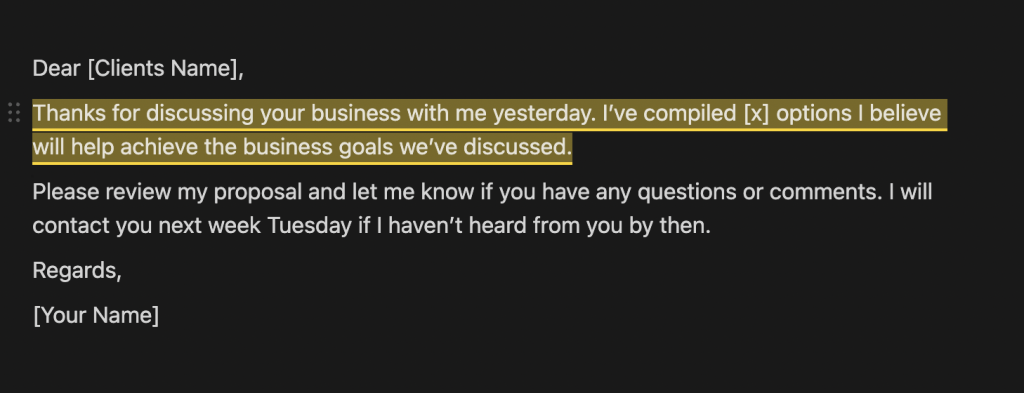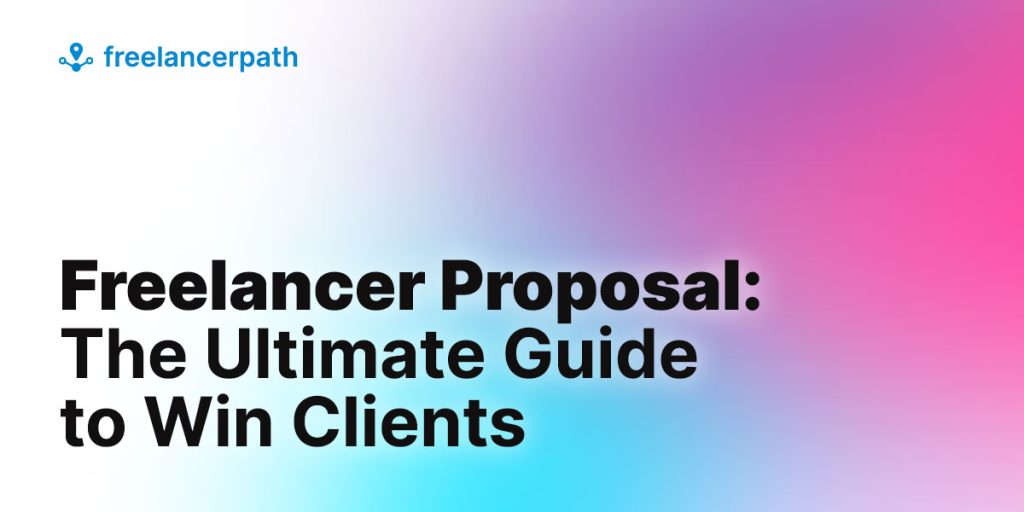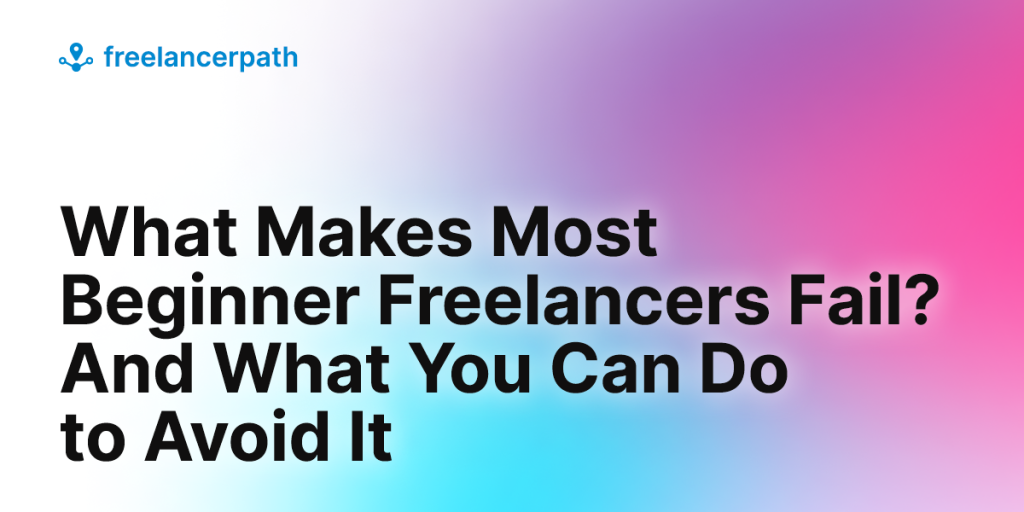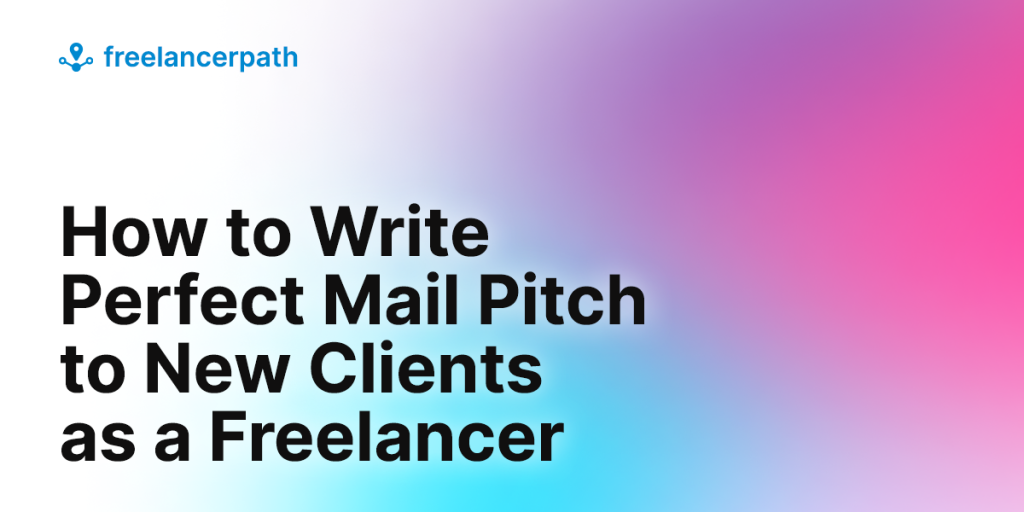One of the most critical skills you need to master is the art of writing an irresistible freelancer proposal. A well-crafted proposal can be the key to winning clients and securing lucrative projects. In this ultimate guide, we will explore the essential steps and strategies to create a freelancer proposal that stands out from the competition and captivates potential clients. Let’s dive in!
But first, if you are a newbie into the freelancer space just check my Get Your First Client freelancer guide for getting first client. It’s a complete step by step guide to get your first client as a freelancer from scratch.
Understanding the Basics of Freelancer Proposals
What is a freelancer proposal and why is it crucial?
A freelancer proposal is a document that outlines your skills, expertise, and proposed solution to a client’s problem or project. It serves as your introduction and sales pitch, convincing the client to choose you over other freelancers. A well-written proposal showcases your professionalism, expertise, and understanding of the client’s needs.

Components of an effective freelancer proposal
To create a winning freelancer proposal, you should include the following key components:
- Introduction: Grab the client’s attention and introduce yourself.
- Problem Statement: Clearly define the client’s problem or project requirements.
- Proposed Solution: Explain how your skills and expertise can solve the client’s problem.
- Timeline: Outline the estimated timeframe for completing the project.
- Pricing: Clearly state your fees or project cost.
- Call-to-Action: Provide clear next steps for the client to move forward.
The role of research in creating a tailored proposal
Before crafting your proposal, conduct thorough research on the client, their industry, and their specific needs. This research will enable you to tailor your proposal to their unique requirements, demonstrating your understanding and dedication. Incorporate industry-specific language and showcase your knowledge to establish credibility and build trust with the client.
Preparing Your Proposal: Step-by-Step Guide
Researching the client and their needs
Start by researching the client’s website, social media presence, and any publicly available information. Understand their goals, challenges, and target audience. This knowledge will allow you to align your freelancer proposal with their specific needs, making it more compelling and relevant.
Real-Life Story:
Meet Sarah, a talented graphic designer, who was eager to secure a freelance project with a well-established e-commerce company. Excited about the opportunity, she dove into researching the client, which was known for its unique and trendy fashion products.
During her research, Sarah discovered that the company had recently expanded into new markets and was striving to attract a younger audience. Through their social media channels, she observed that the brand emphasized sustainability and eco-friendly practices.
Armed with this valuable insight, Sarah crafted a proposal that highlighted her expertise in creating visually stunning designs with eco-conscious themes. She presented ideas for incorporating sustainable packaging designs and eco-friendly branding concepts to resonate with the target audience.
Sarah’s proposal not only demonstrated her artistic skills but also showcased her understanding of the client’s values and aspirations. The client was impressed by her attention to detail and the way she tailored her proposal to meet their specific needs.
As a result, Sarah was awarded the project, and her unique designs played a significant role in strengthening the company’s brand identity and connecting with their desired audience. The successful collaboration led to more projects and established Sarah as a go-to designer for environmentally conscious brands in the fashion industry.
This real-life example showcases the power of thorough research and tailoring a proposal to address the specific needs and aspirations of the client. By taking the time to understand the client’s goals and aligning her freelancer proposal accordingly, Sarah was able to secure a rewarding freelance project that aligned perfectly with her skills and passion.
Structuring your proposal for maximum impact
Organize your freelancer proposal in a logical and easy-to-follow structure. Begin with a captivating introduction, followed by sections that address the client’s problem, proposed solution, timeline, pricing, and call-to-action. Use headings and subheadings to break down the content and enhance readability.
Crafting an attention-grabbing introduction
The introduction sets the tone for your freelancer proposal. Start with a hook that grabs the client’s attention and highlights their pain points or goals. Introduce yourself briefly and establish your credibility by mentioning relevant experience or past successes. Show enthusiasm and convey how excited you are about the opportunity to work with them.

Showcasing your skills and expertise
In this section, focus on showcasing your skills and expertise that directly align with the client’s needs. Highlight relevant projects you have completed, emphasizing successful outcomes and client satisfaction. Provide concrete examples and quantify your achievements whenever possible.
Outlining your approach and deliverables
Clearly outline the steps you will take to accomplish the project goals. Break down the process into manageable phases or milestones and explain how each step contributes to the overall success of the project. Be specific about the deliverables the client can expect, including any additional value or unique offerings you provide.
Pricing and payment terms that work
Determining the right pricing and payment terms can be challenging. Research industry standards and consider factors such as your experience, the scope of the project, and the client’s budget. Clearly state your pricing structure and be transparent about any additional costs or payment milestones. Offer flexible options if possible, but ensure your pricing reflects the value you bring to the table.
Writing Persuasive Proposal Content
Building credibility through a compelling bio and portfolio
Your bio should highlight your relevant experience, skills, and qualifications. Showcase your expertise in a concise and compelling manner. Include a link to your portfolio, which should feature your best work and demonstrate your ability to deliver high-quality results.
Communicating the value proposition effectively
Clearly articulate the unique value you bring to the table. Focus on the benefits the client will receive by choosing you as their freelancer. Highlight how your skills and approach will solve their specific problem, save them time, or generate positive outcomes for their business.
Highlighting past successes and client testimonials
Include success stories and client testimonials that demonstrate your track record of delivering exceptional results. Testimonials add social proof and build trust with potential clients. Whenever possible, provide specific metrics or outcomes to further strengthen your credibility.
Addressing client concerns and offering solutions
Anticipate potential concerns or objections the client may have and proactively address them. Show empathy and offer solutions to overcome any reservations. This demonstrates your professionalism and commitment to providing an exceptional client experience.
Imagine you’re a freelance social media strategist offering for a project to a small business owner. The client expresses concern about their limited budget and worries about the effectiveness of social media marketing for their niche.
In your proposal, you empathize with their budget constraints and propose a cost-effective strategy that focuses on organic growth through engaging content and targeted community management. You assure the client that this approach can yield significant results without requiring hefty advertising expenses.
To further alleviate their worries, you offer a trial period to demonstrate the campaign’s potential before committing to a long-term collaboration. This proactive solution showcases your commitment to providing a positive client experience and helps address any reservations they may have.
By addressing their concerns head-on and offering tailored solutions, you not only showcase your professionalism but also instill confidence in the client, ultimately increasing your chances of winning the project.
Incorporating persuasive language and storytelling techniques
Craft your freelancer proposal using persuasive language that engages the client. Use active voice, personal pronouns, and concrete examples to make your content more relatable and compelling. Incorporate storytelling techniques to evoke emotion and create a memorable impact.
Formatting and Presentation Tips
As a seasoned freelancer, you understand the importance of personal branding in setting yourself apart from the competition. Your personal brand encapsulates your unique skills, values, and style, making it essential to maintain a consistent and professional image across all interactions with clients. When it comes to submitting proposals, the formatting and presentation of your proposal play a significant role in reinforcing your personal brand and leaving a lasting impression on potential clients.
Choosing the right proposal format
Consider the client’s preference when selecting the format for your proposal. Just as your personal brand represents your identity, the format you choose should align with your branding elements. Whether you opt for a traditional professional document, an engaging email, or a visually appealing presentation, ensure that the format reflects your unique style and professionalism
Designing a visually appealing layout
Use consistent branding elements, such as colors, fonts, and logos, to maintain a professional and cohesive visual identity. Incorporate white space to enhance readability and use headings, subheadings, and bullet points to break down information effectively.
Using bullet points and subheadings for clarity
Bullet points and subheadings help to organize your proposal and make it skimmable. They allow the client to quickly grasp the key points and important details. Use bullet points to list benefits, deliverables, and pricing details, and use subheadings to structure your proposal sections.
Paying attention to grammar, spelling, and proofreading
Ensure your freelancer proposal is free of grammatical errors, typos, and inconsistencies. Use professional language and maintain a formal tone throughout. Proofread your proposal multiple times or consider seeking the help of a trusted colleague or proofreading tool to catch any errors.
You can use
Standing Out from the Competition
Analyzing your competitors’ freelancer proposals for inspiration
Research and analyze proposals from your competitors to gain insights into their strategies. Identify areas where you can differentiate yourself and offer unique value. Find ways to stand out while still addressing the client’s needs effectively.
One specific way to find competitor proposals and strategies is to use freelance marketplaces like Upwork or Fiverr. Search for projects similar to the ones you offer, and study the proposals submitted by other freelancers. Analyze their techniques, pricing, and project approaches to gain valuable insights and improve your own proposal to stand out in the competitive landscape.
Get the guide of freelancing
Identifying unique selling points and differentiators
Determine your unique selling points (USPs) and highlight them in your proposal. What sets you apart from other freelancers? It could be a specialized skill, a unique approach, or exceptional customer service. Emphasize these USPs to convince the client that you’re the best fit for their project.
Personalizing the proposal to connect with the client
Tailor your freelancer proposal to each client to demonstrate your genuine interest and understanding. Reference specific details about their business, goals, or challenges. Personalization shows that you have invested time and effort in researching their needs and building a connection.
Adding creative elements or innovative ideas
Inject creativity and innovation into your proposal to capture the client’s attention. Offer fresh ideas or creative solutions that showcase your ability to think outside the box. However, ensure that your ideas align with the client’s objectives and are relevant to their project.
Following Up and Closing the Deal
Importance of timely follow-ups and professionalism
After submitting your proposal, follow up with the client in a timely manner. A prompt follow-up shows your professionalism and commitment. Craft a friendly and concise message to remind them of your proposal and express your eagerness to discuss further.
Crafting a compelling closing statement
End your proposal with a strong closing statement that summarizes the benefits and value you will bring to the client. Reiterate your enthusiasm and confidence in delivering exceptional results. Create a sense of urgency to prompt the client to take action.
Including a clear call-to-action and next steps
Provide a clear call-to-action (CTA) that outlines the next steps for the client. Encourage them to contact you, schedule a meeting, or sign a contract. Make it easy for them to move forward and demonstrate your readiness to start working on their project.
You can use Calendy for this call-to-action step.
Conclusion
In conclusion, writing an irresistible freelancer proposal requires careful planning, thorough research, and persuasive communication. By understanding the basics, preparing a well-structured proposal, highlighting your expertise, addressing client concerns, and personalizing your approach, you can create a compelling proposal that wins clients and propels your freelancing career to new heights. Remember to continuously refine and improve your proposal based on feedback and experience. Best of luck in crafting your irresistible proposals!
FAQs:
- Can I reuse the same freelancer proposal for multiple clients?
Yes, you can reuse the structure and framework of your freelancer proposal for multiple clients. However, make sure to customize each proposal to address the specific needs and requirements of each client. Personalization is key to making a strong impression and showing that you understand their unique challenges. - Should I include pricing details in my freelancer proposal or discuss them later?
It’s generally recommended to include pricing details in your proposal. Transparency helps set clear expectations and prevents any misunderstandings later. However, if you prefer to discuss pricing during a separate conversation or negotiation, you can provide a price range or mention that pricing details will be discussed further upon their interest. - How long should my freelancer proposal be?
Your proposal should be concise, yet comprehensive enough to address all necessary points. Aim for a length that captures the client’s attention and provides relevant details without overwhelming them. Generally, a proposal between 1-3 pages is sufficient, but adjust the length based on the complexity of the project and the specific requirements outlined by the client. - Is it necessary to have a separate cover letter along with the freelancer proposal?
While a separate cover letter isn’t always necessary, it can be a valuable addition in certain cases. A cover letter allows you to introduce yourself, provide a brief overview of your skills and experience, and express your interest in the client’s project. If you believe it will add a personal touch and help you stand out, including a cover letter can be beneficial. - What should I do if the client requests a specific freelancer proposal format?
If the client specifies a preferred freelancer proposal format, such as a specific document type or presentation, it’s important to accommodate their request. Adapting to their preferred format shows your flexibility and willingness to meet their needs. Ensure that the content and structure of your proposal remain intact while adjusting the format accordingly. - How do I handle client objections or negotiations within the freelancer proposal?
Anticipate potential objections and address them proactively in your freelancer proposal. However, if the client raises objections or negotiations after reviewing your proposal, remain professional and open to discussion. Listen to their concerns, empathize with their perspective, and offer viable solutions or compromises. The goal is to find a mutually beneficial agreement that satisfies both parties. - What is the ideal timeline for sending a follow-up after submitting a freelancer proposal?
Follow up within a reasonable timeframe, typically within a week after submitting the freelancer proposal. This shows your professionalism, keen interest, and commitment to the project. Craft a concise and friendly message that expresses your gratitude for their consideration and reiterates your enthusiasm to discuss the proposal further. - How can I track the success rate of my freelancer proposals?
To track the success rate of your proposals, create a system to record and analyze the outcomes. Keep track of the number of proposals sent, the number of clients won, and the revenue generated from each proposal. Identify patterns, strengths, and areas for improvement to refine your approach and increase your success rate over time. - Is it acceptable to use templates for freelancer proposals?
Using templates as a starting point for your freelancer proposals is acceptable and can save time. However, it’s crucial to customize each proposal to meet the specific needs of the client. Tailor the content, language, and structure to address their requirements and showcase your understanding of their unique situation. Personalization is key to making a lasting impression. - How can I make my proposal more visually appealing and professional?
To make your freelancer proposal visually appealing and professional, consider the following:
- Use a consistent color scheme and font selection that aligns with your branding.
- Incorporate your logo and professional imagery, if relevant.
- Break down the content with headings, subheadings, and bullet points for easy readability.
- Use white space strategically to enhance visual clarity.
- Proofread carefully to eliminate any grammar or spelling errors that can detract from professionalism.
- Consider using design tools or professional proposal software to create visually stunning proposals that stand out.
Remember, your proposal’s visual presentation should complement the quality of your content and demonstrate your professionalism and attention to detail.
Actionable Tips
Here are 10 actionable tips for writing an irresistible freelancer proposal, along with real-life examples to provide context and clarity:
- Tip: Start with a compelling hook to grab the client’s attention. Example: Begin your proposal with a thought-provoking question or a captivating statistic that relates to the client’s industry. For example, “Did you know that businesses with effective content marketing strategies experience a 6x higher conversion rate?”
- Tip: Research the client and tailor your proposal to their specific needs. Example: Demonstrate your research by mentioning recent projects or initiatives the client has undertaken and how your skills align with their goals. For instance, “I noticed that your company recently launched a new mobile app, and I specialize in developing intuitive user interfaces that enhance user experiences.”
- Tip: Showcase your expertise and past successes. Example: Share case studies or success stories that highlight your achievements. For instance, “In my previous project, I helped a startup increase their website traffic by 150% through a targeted SEO strategy, resulting in a 20% boost in conversions.”
- Tip: Use persuasive language to convey value. Example: Instead of simply stating your skills, explain how they benefit the client. For instance, “By leveraging my expertise in social media marketing, I can help your brand reach a wider audience, engage with potential customers, and drive higher conversion rates.”
- Tip: Provide a clear and detailed timeline. Example: Break down the project into milestones with specific deadlines. For instance, “Phase 1: Research and strategy development (2 weeks), Phase 2: Content creation and implementation (4 weeks), Phase 3: Performance tracking and optimization (2 weeks).”
- Tip: Offer flexible pricing options, if appropriate. Example: Present different pricing tiers that cater to different client budgets and requirements. For instance, “Option A: Basic package with essential features, Option B: Advanced package with additional analytics and support, Option C: Customized package tailored to your specific needs.”
- Tip: Address potential concerns or objections proactively. Example: Anticipate common objections and provide solutions upfront. For instance, “I understand that budget may be a concern. However, by implementing a targeted advertising strategy, we can maximize your ROI and ensure your marketing efforts are cost-effective.”
- Tip: Include visual elements to enhance the proposal’s appeal. Example: Incorporate relevant charts, graphs, or mock-ups to illustrate your ideas visually. For instance, if you’re proposing a website redesign, include a wireframe or a before-and-after comparison to showcase your vision.
- Tip: Personalize the proposal by referencing specific client pain points. Example: Show empathy and understanding by addressing challenges the client has mentioned or industry-specific pain points they may face. For instance, “As a real estate agent, you’re likely dealing with fierce competition in the market. My tailored marketing strategies can help you stand out and attract more potential buyers.”
- Tip: End with a strong call-to-action and express enthusiasm. Example: Clearly state the next steps and encourage the client to take action. For instance, “I’m excited about the opportunity to work with you and contribute to your business’s growth. Let’s schedule a call to discuss the project further and explore how we can achieve outstanding results together.”
Remember, these tips are meant to guide you in creating an irresistible freelancer proposal. Customize them to suit your unique style, industry, and client requirements for the best possible outcome.



